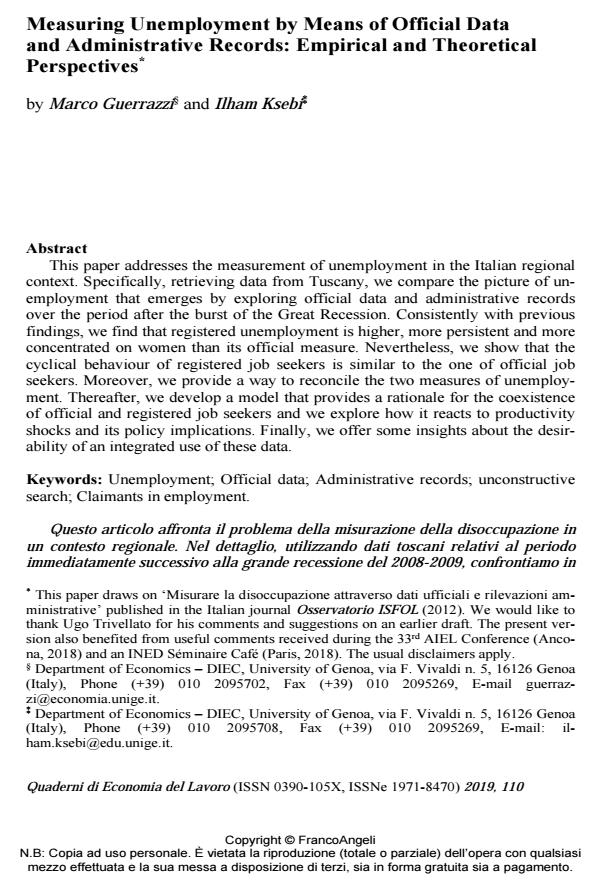Measuring Unemployment by Means of Official Data and Administrative Records: Empirical and Theoretical Perspectives
Titolo Rivista QUADERNI DI ECONOMIA DEL LAVORO
Autori/Curatori Marco Guerrazzi, Ilham Ksebi
Anno di pubblicazione 2020 Fascicolo 2019/110
Lingua Inglese Numero pagine 33 P. 17-49 Dimensione file 735 KB
DOI 10.3280/QUA2019-110002
Il DOI è il codice a barre della proprietà intellettuale: per saperne di più
clicca qui
Qui sotto puoi vedere in anteprima la prima pagina di questo articolo.
Se questo articolo ti interessa, lo puoi acquistare (e scaricare in formato pdf) seguendo le facili indicazioni per acquistare il download credit. Acquista Download Credits per scaricare questo Articolo in formato PDF

FrancoAngeli è membro della Publishers International Linking Association, Inc (PILA)associazione indipendente e non profit per facilitare (attraverso i servizi tecnologici implementati da CrossRef.org) l’accesso degli studiosi ai contenuti digitali nelle pubblicazioni professionali e scientifiche
This paper addresses the measurement of unemployment in the Italian region-al context. Specifically, retrieving data from Tuscany, we compare the picture of unemployment that emerges by exploring official data and administrative records over the period after the burst of the Great Recession. Consistently with previous findings, we find that registered unemployment is higher, more persistent and more concentrated on women than its official measure. Nevertheless, we show that the cyclical behaviour of registered job seekers is similar to the one of official job seekers. Moreover, we provide a way to reconcile the two measures of unemploy-ment. Thereafter, we develop a model that provides a rationale for the coexistence of official and registered job seekers and we explore how it reacts to productivity shocks and its policy implications. Finally, we offer some insights about the desir-ability of an integrated use of these data.
Parole chiave:Unemployment; Official data; Administrative records; unconstructive search; Claimants in employment.
- Wage and employment determination in a dynamic insider–outsider model Marco Guerrazzi, in Evolutionary and Institutional Economics Review /2020 pp.1
DOI: 10.1007/s40844-019-00158-w
Marco Guerrazzi, Ilham Ksebi, Measuring Unemployment by Means of Official Data and Administrative Records: Empirical and Theoretical Perspectives in "QUADERNI DI ECONOMIA DEL LAVORO" 110/2019, pp 17-49, DOI: 10.3280/QUA2019-110002